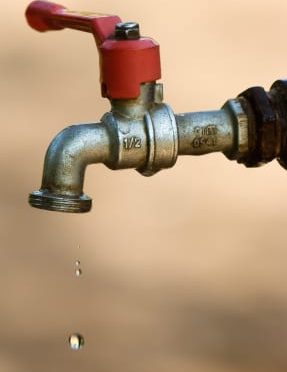
Mould needs water, oxygen and a food source to grow. It thrives in high humidity or damp conditions and loves dark cracks and crevices. For this reason mould is can be commonly found in the bathroom of your home or rental property. You can reduce mould in the bathroom by ensuring it is in tip top shape and minor repairs are carried out if needed. A few easy checks and repairs you can do yourself include: checking for leaking pipes, fixing a leaking tap, replacing cracked tiles and repairing damaged grout.
The volume of water a dripping tap or leaking pipe can waste will vary depending on the severity of the leak; however it can waste around 2 litres of water every hour. This doesn’t sound like much until you add it up and realise its nearly 18,000 litres per year. Sometimes a leak can be behind a wall or in the ceiling and can only be detected by reading the water meter. The best way to do this is check the meter reading last thing at night. Then before anyone uses any water in the morning, check the reading again. Compare the two amounts and if there is any difference, you may have a leak and you should contact a licensed plumber for further investigation.
Dripping taps usually occur when fixtures are turned off too tightly and the pressure on the washer over time causes it to deteriorate. You can replace a tap washer by using this following guide:
- Turn off all water using appliances.
- Turn off the water at the meter.
- Relieve the water pressure at the nearest tap to the meter by turning it on (don’t forget to turn it back off).
- Turn the dripping tap on all the way.
- Remove the tap handle and flange.
- Scrape away any old silicon around the tap fitting.
- Undo the spindle, remove the washer and replace it with a new one.
- Replace the flange firmly by hand and the tap handle (tighten with a shifter).
- Turn the water mains tap back on at the meter. If the area is still leaking repeat the previous steps or contact a licensed plumber.
Chipped, cracked or damaged tiles can provide mould the perfect dark home to grow in and once in there can be hard to remove. The best method of fixing this is by replacing the tile. Firstly, remove the damaged tile by placing a chisel behind the tile and tapping on it gently with a hammer. This should break the bond and cause it to come free. Ensure the entire tile adhesive in the spot and grout surrounding it is removed. Apply some new tile adhesive with a putty knife (not too thick) and press the new tile into position. Allow it to set for a full day then apply new grout into the gaps around the tile (see how below).
Grout can crack or start falling out between tiles and become mouldy. When this happens it is time to replace it. The best way of doing this is to remove the remains of the old grout with a thin knife or flat screwdriver. Be careful not to damage any tiles by going too fast and slipping. Once this is out apply the new grout between the tiles and use your finger to firmly press it down, ensuring all gaps are filled. Wipe away the excess grout and leave for 24 hours. Buff lightly with a damp sponge to make it even and apply a water resistant sealer to the grout.
After these repairs have been carried out you will still need to have your mould cleaned up correctly to prevent it from returning. If your property is located in the Sydney, Central Coast or Newcastle areas contact the professionals at Mould Removal today on 0408 681034 or email info@mouldremoval.net.au for an obligation free quote. We also give advice on ways to prevent mould from returning after the mould has been removed.

